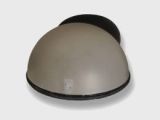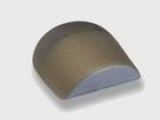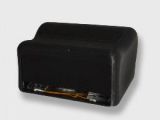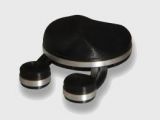Microsoft’s foray into Natural User Interfaces does not stop with its Windows operating system. Windows 7 will be a critical asset to ushering in the NUI era for hardware but, although a software company focused first of all on the Windows client, Microsoft is also building hardware. Well, not exactly hardware, so much as peripherals. And through five mouse prototypes, the Redmond company is exploring technology that will end up creating the “Mouse 2.0.” As you will be able to see via the video embedded at the bottom of the screen, Microsoft has married the traditional mouse design and functionality with touch capabilities. Just watch the demonstration, and get a taste of what the FTIR (Frustrated Total Internal Reflection) Mouse, the Orb Mouse, the Cap (capacitive) Mouse, the Side Mouse, and the Arty (articulated) Mouse are capable of.
Currently, Windows 7’s touch NUI is intimately connected with screens. But in fact there’s no reason that any touch-capable input device could not be used in order to permit end users to enjoy a new level of interaction with the operating system. The five mouse prototypes from Microsoft's Applied Sciences Group are an illustrative example of just how traditional input models can evolve in order to enable users to take advantage of natural interaction actions.
The prototypes demoed by the Redmond company involve touch, multi-touch, and gesture recognition. The designs will be unveiled at the User Interface Software and Technology Conference in British Columbia, Canada this week. Below you will be able to find the description for each mouse prototype from Microsoft, courtesy of Crave.
“FTIR (Frustrated Total Internal Reflection) Mouse: FTIR Mouse is a mouse design that uses the principle of frustrated total internal reflection and a built-in camera to sense user's touches on top of an arc-shaped piece of acrylic.
“Orb Mouse: The Orb Mouse uses a hemispherical surface with an IR-sensitive camera for multitouch capabilities. This design provides an easy-to-grip form-factor and the constant curvature of the shape ensures that the user's fingers are comfortable, with a smooth gradient while moving from side to side and front to back. The Orb Mouse lets all fingers and the whole hand be engaged in multitouch interactions.
“Cap (capacitive) Mouse: The Cap Mouse tracks the position of multiple fingers on its surface through the use of a flexible matrix of capacitive-sensing electrodes just under the top surface of the mouse. The Cap Mouse is compact, uses little power, and is insensitive to ambient lighting conditions.
“Side Mouse: Side Mouse is designed to rest under the user's palm and it allows the fingers to touch the table surface directly in front of the device to create a multitouch area that is not restricted to the physical surface of the device. The mouse senses the proximity of the user's fingers as they touch the table surface instead of the mouse. Side Mouse is capable of larger sizes of extended gestures and even two-handed input.
“Arty (articulated) Mouse: The Arty Mouse takes the notion of Side Mouse one step further with a base for the palm of the hand to rest on and two "arms" that can be freely and independently moved on the table by the thumb and index finger. This design allows a high-resolution optical mouse sensor to be placed underneath two of the user's fingers for extremely high sensing fidelity. This prototype can support subtle and fine-grained multitouch gestures.”
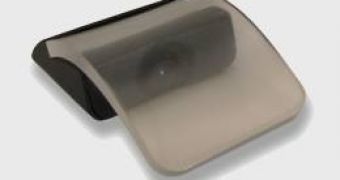
 14 DAY TRIAL //
14 DAY TRIAL // 
